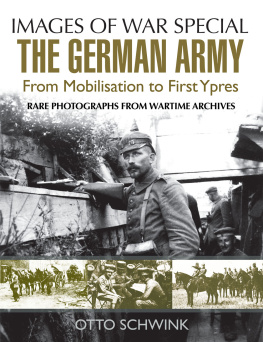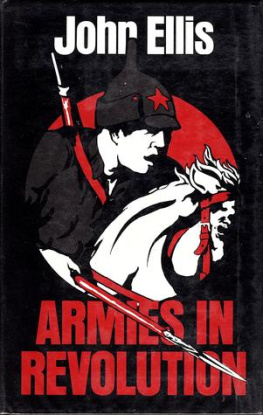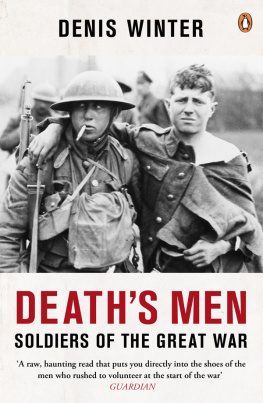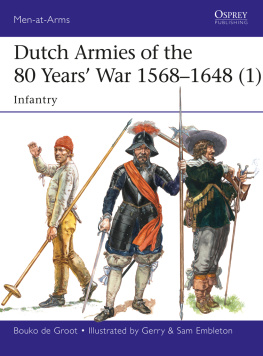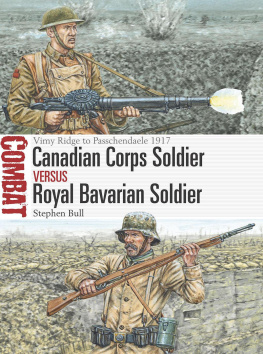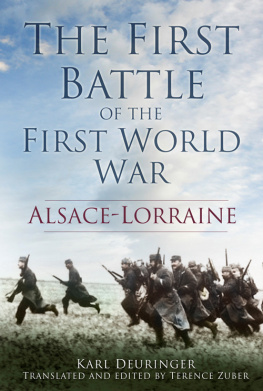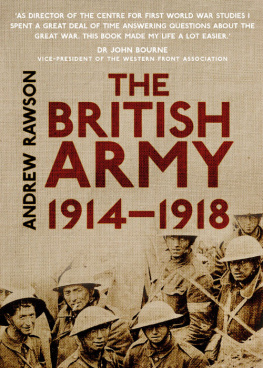The Bavarian Army has been overshadowed by those of Gustavus Adolphus and Wallenstein, but it was one of only a few armies to have fought throughout the Thirty Years War, first as part of the Catholic League and then an independent army after the Peace of Prague. Among the generals of the Bavarian Army were Count Johann von Tilly and Gottfried von Pappenheim, who are two of the most famous generals of the war. This book covers not only the Bavarian Armys organisation, but also has chapters on recruitment, officers, clothing, weaponry, pay and rations of a soldier during the Thirty Years War. As well as life and death in the army, this book also looks at the women who accompanied it. The chapter on civilians and soldiers looks at the impact of the war on the civilian population, their reaction to it and the infamous sack of Magdeburg which sent shockwaves across Europe. This chapter also looks at the impact on Bavaria by having Swedish, Spanish and Imperialist troops quartered upon it and how this affected the countrys war effort. In addition there are chapters on regimental colours and a detailed look into the tactics of the time, including those of Spain, Sweden and the Dutch. As well as using archival and archaeological evidence to throw new light on the subject the author has used several memoirs written by those who served in the army during the war, including Peter Hagendorf who served in Pappenheims Regiment of Foot from 1627 until the regiment was disbanded after the war. Hagendorf s vivid account is unique because not only is it a full account of the life of a common soldier during the war, but it also records the human side of campaign, including the death of his two wives and all but two of his children. This book is essential reading to anyone interested in the wars of the early seventeenth century, not just the Thirty Years War.
Laurence Spring studied at the Universities of London and Aberystwyth. He is also a qualified archivist, and has worked for many years at the Surrey History Centre. He has researched the early seventeenth century for many years and has written on various aspects of the English Civil War, including the campaigns of Sir William Waller and the armies of Sir William Waller and the Earl of Manchester. He has also written many books on the Russian Army during the Napoleonic Wars. Since he has an archival background he prefers to search through archives looking for interesting facts for his books that give a vivid insight into the subject, and which are usually not mentioned in secondary sources or contradict the established facts. His first book for Helion, The First British Army, 1624 1628: The Army of the Duke of Buckingham , was published in 2016.
Mark Allen (illustrator, front cover image)
An industry professional in publishing and book sales, Mark Allen has worked for WH Smith, PSL, Blandford Press and Cassell, before becoming Sales Director at Photobook Information Services which seemed to involve playing lots of cricket for West Malvern and not a lot else. Since 1991 Mark has spent most of his time painting model soldiers for a living, with a brief return, to a proper job, with Waterstones.
The Bavarian Army during the Thirty Years War 16181648
The Backbone of the Catholic League
Laurence Spring
Helion & Company Limited
26 Willow Road
Solihull
West Midlands
B91 1UE
England
Tel. 0121 705 3393
Fax 0121 711 4075
Email:
Website: www.helion.co.uk
Twitter:
Visit our blog http://blog.helion.co.uk/
Published by Helion & Company 2017
Cover designed by by Paul Hewitt, Battlefield Design ( www.battlefield-design.co.uk )
Text Laurence Spring 2017
Images as individually credited
Maps drawn by George Anderson Helion & Company 2017
Front cover: ensign with infantry colours, Bavarian Army c .1630s. Painting by Mark Allen Helion & Company 2017
Rear cover: the sacking of Magdeburg, 1631
Every reasonable effort has been made to trace copyright holders and to obtain their permission for the use of copyright material. The author and publisher apologize for any errors or omissions in this work, and would be grateful if notified of any corrections that should be incorporated in future reprints or editions of this book.
ISBN 978-1-911512-39-4
eISBN 978-1-913118-48-8
MobiISBN 978-1-913118-48-8
British Library Cataloguing-in-Publication Data.
A catalogue record for this book is available from the British Library.
All rights reserved. No part of this publication may be reproduced, stored in a retrieval system, or transmitted, in any form, or by any means, electronic, mechanical, photocopying, recording or otherwise, without the express written consent of Helion & Company Limited.
For details of other military history titles published by Helion & Company Limited contact the above address, or visit our website: http://www.helion.co.uk.
We always welcome receiving book proposals from prospective authors.
List of Illustrations
Maps
Central Europe during the Thirty Years War
Bavaria and its neighbours during the Thirty Years War
Illustrations
1. Johann von Tilly, of one the chief commanders of the Imperial forces in the initial half of the Thirty Years War.
2. Gottfried von Pappenheim, the cavalry general whose reputation was tarnished by his actions at Breitenfeld.
3. Johann von Werth, an able cavalry commander who was able to raid deep into France.
4. Sydnam Poyntz. Originally a London apprentice, he ran away to the European wars and rose to become a major general.
5. Sir James Turner travelled from his native Scotland to fight in the German Wars. He was to publish the famous military treatise Pallas Armata.
6. L enrlement des troupes (Enrolling the troops), from Jacques Callots Les misres et les malheurs de la guerre , 1633.
7. Swedish Army Deployment at the Battle of Ltzen, 1632.
8. Imperial Army Deployment at the Battle of Ltzen, 1632.
9. The arms and armour of a cuirassier, from the first part of Henry Hexhams Principles of the Art Military , 1642 edition.
10. A Croat light horseman. Soldiers such as these were recruited from the military border with the Turkish Empire.
11. A typical depiction of a mounted harquebusier from the early part of the Thirty Years War.
12. The somewhat idealised depiction of a musketeer going through his postures of drill.
13. The arms of pikemen and musketeers, from the first part of Henry Hexhams Principles of the Art Military , 1642 edition.
14. The depiction of dragoons and their equipment from a military manual of the time. Dragoon pikemen were used in the early stages of the war.
15. Although showing a scene from the Dutch Revolt, this contemporary image by Pieter Snayers clearly shows the location of the colours in a foot regiment on the battlefield. Many contemporary military manuals advocated the ensign to swap his colour for the pike of an experienced soldier in the middle of the formation and fight in the front rank.
16. Bavarian cavalry cornets. (All drawings by Dr Lesley Prince)
17. Bavarian infantry colours. (All drawings by Dr Lesley Prince)
18. The ideal military encampment. Kriegswesen & Belagerung & Zelt & Htte (A view of camp and huts), from Wilhelm Dilich, Peribologia, seu Muniendorum locorum ratio Wilhelmi Dilichii , 1641.



